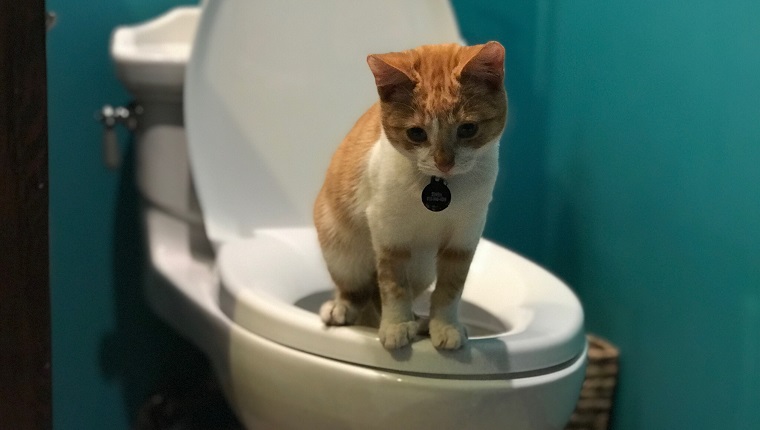The Significance of Proper Disposal of Animal Waste
The Significance of Proper Disposal of Animal Waste
Blog Article
Have you been trying to find answers involving 4 Reasons Why Dog Poop Cleanup is Important?

When it concerns throwing away waste, specifically animal waste, lots of people usually consider the convenient choice of flushing it down the commode. Nonetheless, this apparently easy solution can have severe effects for the environment and public health. In this post, we'll explore why flushing pet waste down the commode is a poor concept and supply different methods for appropriate disposal.
Intro
Correct garbage disposal is crucial for maintaining ecological sustainability and public health. While it might seem harmless to purge animal waste down the bathroom, it can lead to numerous concerns, both for the setting and human well-being.
Dangers of flushing pet waste
Ecological influence
Purging pet waste presents harmful bacteria and pathogens into waterways, which can negatively impact aquatic communities. These pathogens can infect water resources and harm marine life, interfering with fragile communities.
Public health problems
Pet waste includes hazardous bacteria such as E. coli and Salmonella, which can position significant health threats to human beings. Flushing animal waste down the toilet can contaminate water materials, resulting in the spread of diseases and infections.
Alternatives to flushing
Rather than flushing animal waste down the commode, there are a number of different disposal methods that are extra eco-friendly and hygienic.
Composting
Composting animal waste is an eco-friendly way to take care of it. By composting, organic matter is broken down right into nutrient-rich soil, which can be used to feed gardens and plants.
Landfill disposal
Throwing away animal waste in a landfill is one more alternative. While not as eco-friendly as composting, it is a more secure alternative to flushing, as it protects against the contamination of water sources.
Animal waste disposal systems
There are specific pet waste disposal systems available that securely and hygienically deal with animal waste. These systems usually make use of enzymes to break down waste and remove odors.
Actions to proper animal waste disposal
To make sure proper disposal of animal waste, adhere to these actions:
Scooping and getting waste
Consistently scoop and bag animal waste using naturally degradable bags. This prevents waste from infecting the environment.
Utilizing designated waste bins
Dispose of bagged animal waste in designated waste containers, such as garden compost containers or land fill bins. Avoid flushing it down the bathroom in all prices.
Cleaning up litter boxes and animal areas on a regular basis
Routinely clean can and pet areas to prevent the buildup of waste and microorganisms. Use pet-safe cleaning items to preserve health.
Benefits of proper disposal approaches
Embracing appropriate disposal methods for pet waste uses numerous advantages:
Reduced environmental pollution
Appropriate disposal methods minimize the threat of environmental pollution, securing waterways and environments from contamination
Lessened risk of water contamination.
By avoiding flushing pet waste down the commode, the risk of water contamination is significantly decreased, guarding public health.
Enhanced sanitation and health
Correct disposal techniques advertise much better cleanliness and health, developing a much safer environment for both human beings and animals.
Conclusion
To conclude, purging pet waste down the commode is damaging to the environment and public health. By taking on different disposal methods and adhering to proper waste administration practices, we can decrease the adverse influence of pet waste and add to a cleaner, much healthier world.
What To Do With Dog Poo – The Do's And Don'ts Of Disposing Of Faeces
Dog poo bins
Some councils provide dedicated dog waste bins in popular dog-walking areas that can take dog poo that has been bagged but you can legally dispose of dog waste in any public litter bin, as long as it is securely bagged. This also applies to your wheelie bin at home.
Do not flush
Water companies do not recommend flushing dog faeces down the toilet because certain parasites can survive the water processing treatment and are potentially harmful to humans. You should also never consider flushing dog poo that has been bagged down the toilet as the bags will not break down and instead create severe blockages in the sewage system.
In the woods
The Forestry Commission promotes a ‘stick and flick’ method for dealing with waste in the woods. This means finding a stick and using it to flick any poo from off the path so that it is out of the way of other walkers. You could also bury it as long as it is not in an area where there might be livestock.
Livestock
Parasites found in dog poo can be transmitted to livestock if they inadvertently eat infected faeces that has been left on grazing land. This could result in the death of sheep or abortion in cattle so you should always make sure you pick up your dog’s waste in fields where livestock could be present.

Routinely clean can and pet areas to prevent the buildup of waste and microorganisms. Use pet-safe cleaning items to preserve health.
Benefits of proper disposal approaches
Embracing appropriate disposal methods for pet waste uses numerous advantages:
Reduced environmental pollution
Appropriate disposal methods minimize the threat of environmental pollution, securing waterways and environments from contamination
Lessened risk of water contamination.
By avoiding flushing pet waste down the commode, the risk of water contamination is significantly decreased, guarding public health.
Enhanced sanitation and health
Correct disposal techniques advertise much better cleanliness and health, developing a much safer environment for both human beings and animals.
Conclusion
To conclude, purging pet waste down the commode is damaging to the environment and public health. By taking on different disposal methods and adhering to proper waste administration practices, we can decrease the adverse influence of pet waste and add to a cleaner, much healthier world.
What To Do With Dog Poo – The Do's And Don'ts Of Disposing Of Faeces
Dog poo bins
Some councils provide dedicated dog waste bins in popular dog-walking areas that can take dog poo that has been bagged but you can legally dispose of dog waste in any public litter bin, as long as it is securely bagged. This also applies to your wheelie bin at home.
Do not flush
Water companies do not recommend flushing dog faeces down the toilet because certain parasites can survive the water processing treatment and are potentially harmful to humans. You should also never consider flushing dog poo that has been bagged down the toilet as the bags will not break down and instead create severe blockages in the sewage system.
In the woods
The Forestry Commission promotes a ‘stick and flick’ method for dealing with waste in the woods. This means finding a stick and using it to flick any poo from off the path so that it is out of the way of other walkers. You could also bury it as long as it is not in an area where there might be livestock.
Livestock
Parasites found in dog poo can be transmitted to livestock if they inadvertently eat infected faeces that has been left on grazing land. This could result in the death of sheep or abortion in cattle so you should always make sure you pick up your dog’s waste in fields where livestock could be present.

Do you like reading up on Don't Flush Your Pets Poo Down The Loo, Vet Warns? Try leaving a short review directly below. We would be glad to know your opinion about this write up. Hoping that you come back again in the future. Sharing is good. Helping people is fun. I love your readership.
Book Instantly Report this page